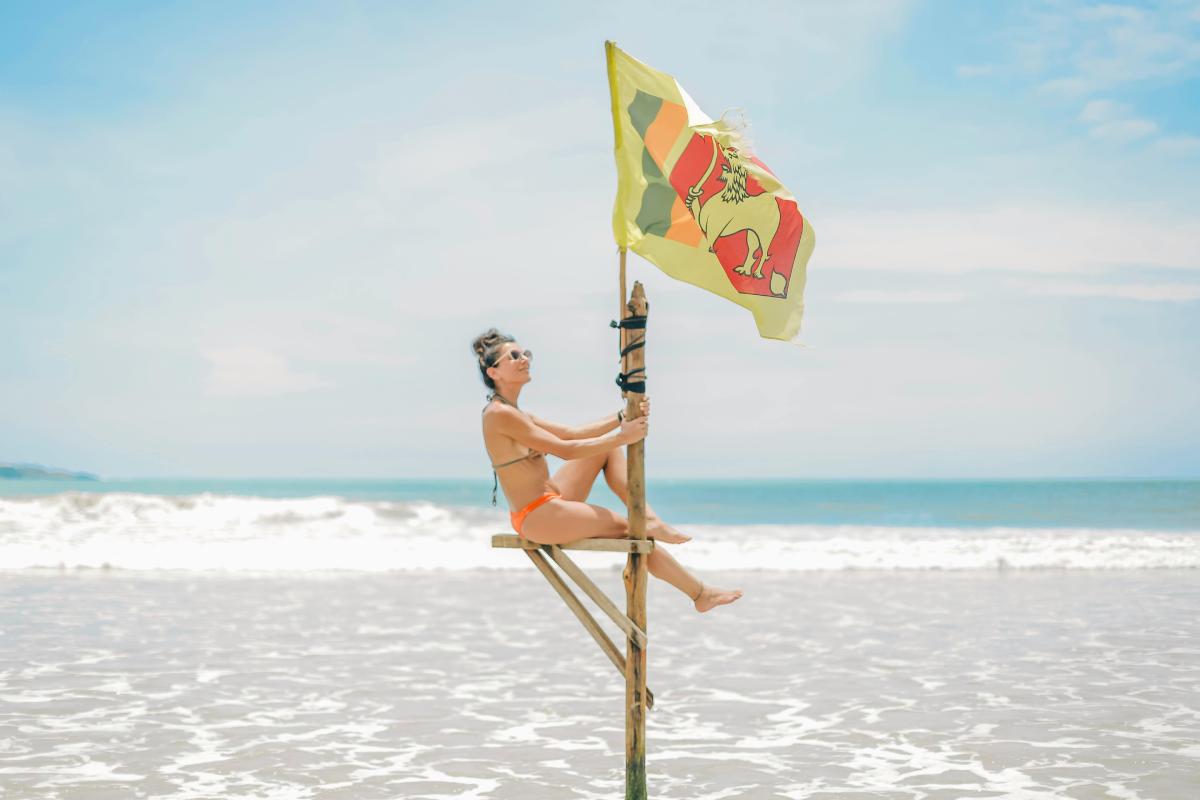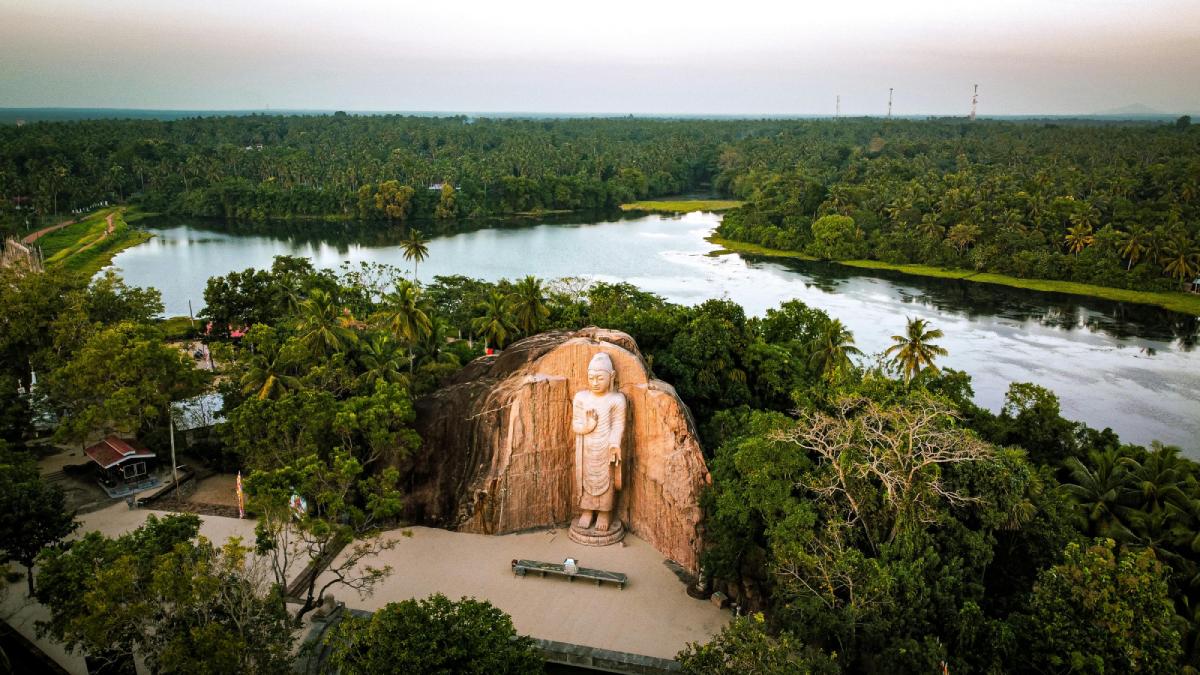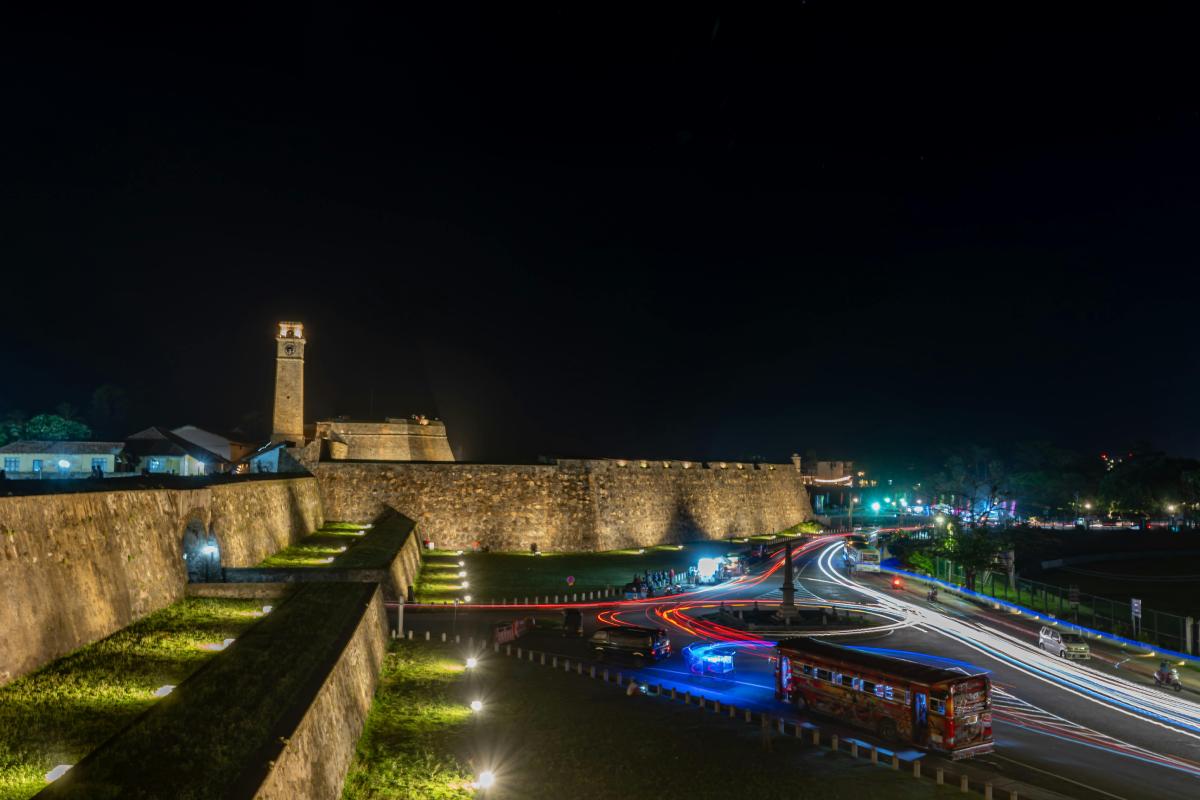Sri Lanka, the teardrop-shaped island nation in the Indian Ocean, has emerged as one of Asia’s most captivating travel destinations. With its ancient ruins, lush landscapes, vibrant culture, and pristine beaches, this compact country packs an incredible diversity of experiences into its modest size. Whether you’re seeking adventure, relaxation, cultural immersion, or wildlife encounters, Sri Lanka offers something for every type of traveler.
Understanding Sri Lanka: A Brief Overview
Located just south of India, Sri Lanka boasts a history spanning over 3,000 years. Ancient kingdoms, colonial influences, and modern developments have shaped this island nation into the cultural melting pot it is today. Despite its relatively small size—about the same area as Ireland—Sri Lanka contains eight UNESCO World Heritage Sites, 26 national parks, and hundreds of miles of pristine coastline.
The country’s geography contributes to its diverse climate zones, ranging from tropical beaches to cool mountainous regions. This variety allows travelers to experience distinctly different landscapes and activities within remarkably short distances—a characteristic that makes Sri Lanka particularly attractive for visitors with limited time.
When to Visit: Understanding Sri Lanka’s Seasons
Sri Lanka experiences two monsoon seasons affecting different parts of the island at different times:
- Southwest Monsoon (May to September): Affects the western and southern coasts and central highlands.
- Northeast Monsoon (October to January): Brings rain to the north and eastern coastal regions.
This creates the interesting phenomenon where it’s almost always the perfect season to visit some part of the island. For general tourism covering multiple regions, the December to March period offers the best overall weather conditions.
High season runs from December to March, with a secondary peak in July and August. Budget travelers may prefer shoulder seasons (April-May, September-November) when accommodations are more affordable and tourist sites less crowded, though weather can be unpredictable.
Exploring the Wonders of Sri Lanka
Colombo: The Gateway City
Most journeys to Sri Lanka begin in Colombo, the commercial capital and largest city. While many travelers rush to leave, the city rewards those who linger with a fascinating blend of colonial architecture, modern developments, and cultural institutions.
What to See and Do:
- Explore the historic Fort area with its colonial buildings
- Visit the National Museum to understand Sri Lanka’s rich history
- Shop at the vibrant Pettah Market
- Stroll along Galle Face Green at sunset
- Discover contemporary Sri Lankan art at the Colombo Gallery
Colombo also offers excellent dining options, from street food to high-end restaurants showcasing Sri Lankan cuisine. Allow 1-2 days to experience the city properly.
The Cultural Triangle
North of Colombo lies Sri Lanka’s famed Cultural Triangle, encompassing the ancient cities of Anuradhapura, Polonnaruwa, Sigiriya, and Dambulla. This region contains the highest concentration of archaeological wonders in the country.
Anuradhapura: The first capital of ancient Sri Lanka features massive dagobas (brick stupas), ancient pools, and the sacred Sri Maha Bodhi tree, reportedly grown from a cutting of the tree under which Buddha attained enlightenment.
Polonnaruwa: The second ancient capital offers better-preserved ruins from the 12th century, including impressive Buddha statues carved from solid rock.
Sigiriya: Perhaps Sri Lanka’s most iconic site, this ancient rock fortress rises dramatically from the surrounding plains. The climb to the top passes colorful frescoes and the famous Lion’s Paw entrance, rewarding visitors with panoramic views and the ruins of a palace.
Dambulla: The magnificent cave temples here contain 153 Buddha statues and vibrant ceiling paintings dating back to the 1st century BCE.
Plan to spend 3-5 days exploring the Cultural Triangle, using either Dambulla or Habarana as a convenient base.
Kandy: The Sacred City
As Sri Lanka’s cultural capital, Kandy offers a cooler climate and a more relaxed atmosphere than Colombo. The city is built around a picturesque lake and is home to the Temple of the Sacred Tooth Relic, one of Buddhism’s most venerated sites.
What to See and Do:
- Visit the Temple of the Sacred Tooth Relic
- Explore the Royal Botanical Gardens in nearby Peradeniya
- Attend a traditional Kandyan dance performance
- Hike in the surrounding Knuckles Mountain Range
- Shop for traditional crafts and gemstones
If your visit coincides with the Esala Perahera festival (July/August), you’ll witness one of Asia’s most spectacular cultural processions, featuring elaborately decorated elephants, dancers, and musicians.
The Hill Country
Sri Lanka’s central highlands offer respite from the coastal heat and some of the most beautiful landscapes in the country. The region is famous for its tea plantations, colonial hill stations, and biodiversity.
Nuwara Eliya: Known as “Little England,” this charming town features colonial architecture, a cool climate, and manicured gardens. It’s the perfect base for visiting nearby tea plantations and hiking in Horton Plains National Park to World’s End, a dramatic cliff with vertigo-inducing views.
Ella: This laid-back mountain village has become increasingly popular with travelers seeking beautiful hiking trails, waterfalls, and incredible train journeys. Don’t miss the trek to Ella Rock or the smaller but equally rewarding Little Adam’s Peak.
Haputale: Less visited than Ella but equally beautiful, Haputale offers spectacular views, including the famous Lipton’s Seat viewpoint named after the tea baron Sir Thomas Lipton.
The train journey from Kandy to Ella through the hill country is consistently rated among the world’s most scenic rail trips. Book a window seat on the right side when traveling from Kandy for the best views.
Wildlife Encounters
Sri Lanka offers exceptional wildlife viewing opportunities, with elephants, leopards, sloth bears, and hundreds of bird species inhabiting its national parks.
Yala National Park: Famous for having one of the highest leopard densities in the world, though its popularity means it can get crowded.
Udawalawe National Park: Offers almost guaranteed elephant sightings in a more open landscape.
Wilpattu National Park: Less visited but rewarding for serious wildlife enthusiasts, particularly for leopard sightings.
Minneriya and Kaudulla National Parks: Host the famous “The Gathering,” where hundreds of elephants congregate around receding water sources during the dry season (August-September).
For marine wildlife, opportunities abound to spot blue whales and sperm whales off the coast of Mirissa (December-April) or to snorkel with turtles at Hikkaduwa and Unawatuna.
Coastal Treasures
Sri Lanka is ringed by beautiful beaches suited to different tastes and activities:
Southwest Coast: The most developed beach areas include Bentota, Hikkaduwa, and Unawatuna, offering water sports, beach bars, and a range of accommodation.
South Coast: Less developed areas like Tangalle and Dickwella provide more secluded beach experiences.
East Coast: Arugam Bay is a world-renowned surfing destination (May-September), while Trincomalee and Pasikudah offer pristine beaches and calm waters perfect for swimming.
North Coast: The Jaffna Peninsula, long off-limits during the civil war, is now open to visitors seeking an authentic cultural experience distinctly different from the rest of Sri Lanka.
Galle: Colonial Charm
The fortified city of Galle, another UNESCO World Heritage Site, showcases Dutch colonial architecture within its well-preserved walls. Walking through the narrow streets lined with boutiques, cafes, and restored buildings is like stepping back in time.
The fort area is perfect for leisurely exploration, shopping for local crafts and gems, and dining at restaurants serving both Sri Lankan and international cuisine. Base yourself here for 2-3 days to explore both the town and nearby beaches.
Practical Travel Information
Getting Around
Trains: Sri Lanka’s railway network is affordable and scenic, particularly in the hill country, though services can be crowded and reservations for long-distance journeys are advisable.
Buses: An extensive network of public buses reaches virtually every corner of the island. They’re extremely affordable but can be crowded and driven somewhat aggressively.
Tuk-tuks: These three-wheeled taxis are ubiquitous and convenient for short distances. Always negotiate the fare before setting off or insist on using the meter where available.
Private drivers: For maximum flexibility, many travelers opt to hire a car with a driver for part or all of their journey. This is surprisingly affordable, especially when shared among several travelers.
Domestic flights: Limited domestic flights connect Colombo with Jaffna and Trincomalee, saving significant travel time.
Accommodation Options
Sri Lanka caters to all budgets and preferences:
Budget: Guesthouses and hostels start from around $10-20 per night.
Mid-range: Boutique hotels and good quality guesthouses range from $40-100 per night.
Luxury: Colonial-era restored properties, five-star resorts, and exclusive villas can cost $150-500+ per night.
Eco-lodges, treehouse accommodations, and glamping options have also emerged as popular alternatives, particularly in natural settings.
Cuisine and Dining
Sri Lankan cuisine is a highlight of any visit, characterized by fragrant spices, coconut, and fresh ingredients. Unlike Indian cuisine, which it’s often compared to, Sri Lankan food has its own distinct identity:
Rice and Curry: The national staple, typically served with several vegetable, fish, or meat curries.
Hoppers: Bowl-shaped pancakes made from fermented rice flour and coconut milk, often served with an egg cooked inside.
Kottu Roti: A popular street food made by stir-frying chopped flatbread with spices, vegetables, and meat.
Seafood: Fresh and abundant along the coast, often prepared with minimal spices to highlight the natural flavors.
Fruit: Tropical varieties include king coconut, mangosteen, rambutan, and the infamous durian.
Most restaurants in tourist areas offer Western alternatives, but authentic Sri Lankan cuisine provides the most rewarding culinary experiences. Street food is generally safe if well-cooked and served hot.
Cultural Etiquette
Sri Lankans are generally warm and welcoming, but appreciating local customs enhances the travel experience:
- Remove shoes when entering temples and homes
- Cover shoulders and knees when visiting religious sites
- Ask permission before photographing people, especially monks
- Use your right hand for giving and receiving
- Don’t pose for photos with your back to Buddha statues
- Public displays of affection are frowned upon
Safety and Health
Sri Lanka is generally safe for travelers, but standard precautions apply:
- Drink bottled or purified water
- Apply insect repellent, particularly in rural areas and during dawn/dusk
- Respect the power of the ocean—some beaches have strong currents
- Purchase comprehensive travel insurance covering medical evacuation
- Check the latest COVID-19 requirements before traveling
Sustainability Considerations
Responsible tourism practices are increasingly important in Sri Lanka:
- Choose eco-friendly accommodations that conserve water and energy
- Avoid single-use plastics (bring a reusable water bottle)
- Never ride elephants at attractions offering this activity
- Support community-based tourism initiatives
- Purchase handicrafts directly from artisans
- Consider offsetting the carbon emissions from your flights
Suggested Itineraries
Classic Sri Lanka (2 weeks)
- Days 1-2: Colombo
- Days 3-6: Cultural Triangle (Anuradhapura, Sigiriya, Polonnaruwa)
- Days 7-8: Kandy
- Days 9-11: Hill Country (Nuwara Eliya, Ella)
- Days 12-14: South Coast (Galle, beaches)
Nature and Wildlife Focus (2 weeks)
- Days 1: Colombo
- Days 2-4: Wilpattu National Park
- Days 5-7: Cultural Triangle with Minneriya National Park
- Days 8-10: Hill Country hiking
- Days 11-12: Udawalawe or Yala National Park
- Days 13-14: Whale watching in Mirissa and beaches
Family-Friendly Sri Lanka (10 days)
- Days 1-2: Colombo (National Museum, Galle Face Green)
- Days 3-4: Sigiriya and elephant safari
- Days 5-6: Kandy (cultural shows, botanical gardens)
- Days 7-8: Nuwara Eliya (tea plantations, train ride)
- Days 9-10: Beach time in Bentota or Unawatuna
Final Thoughts
Sri Lanka offers a remarkable diversity of experiences within a manageable area, making it possible to combine ancient heritage, wildlife encounters, mountain scenery, and beach relaxation in a single trip. This compact versatility, combined with the legendary hospitality of Sri Lankans, creates an unforgettable travel experience that often leaves visitors planning their return before they’ve even departed.
The resilience of Sri Lanka’s tourism industry following past challenges demonstrates the enduring appeal of this island paradise. Whether you’re drawn by the archaeological wonders, the call of the wild, the lush landscapes, or simply the warm smiles of its people, Sri Lanka rewards travelers with authentic experiences that linger long after the journey ends.


